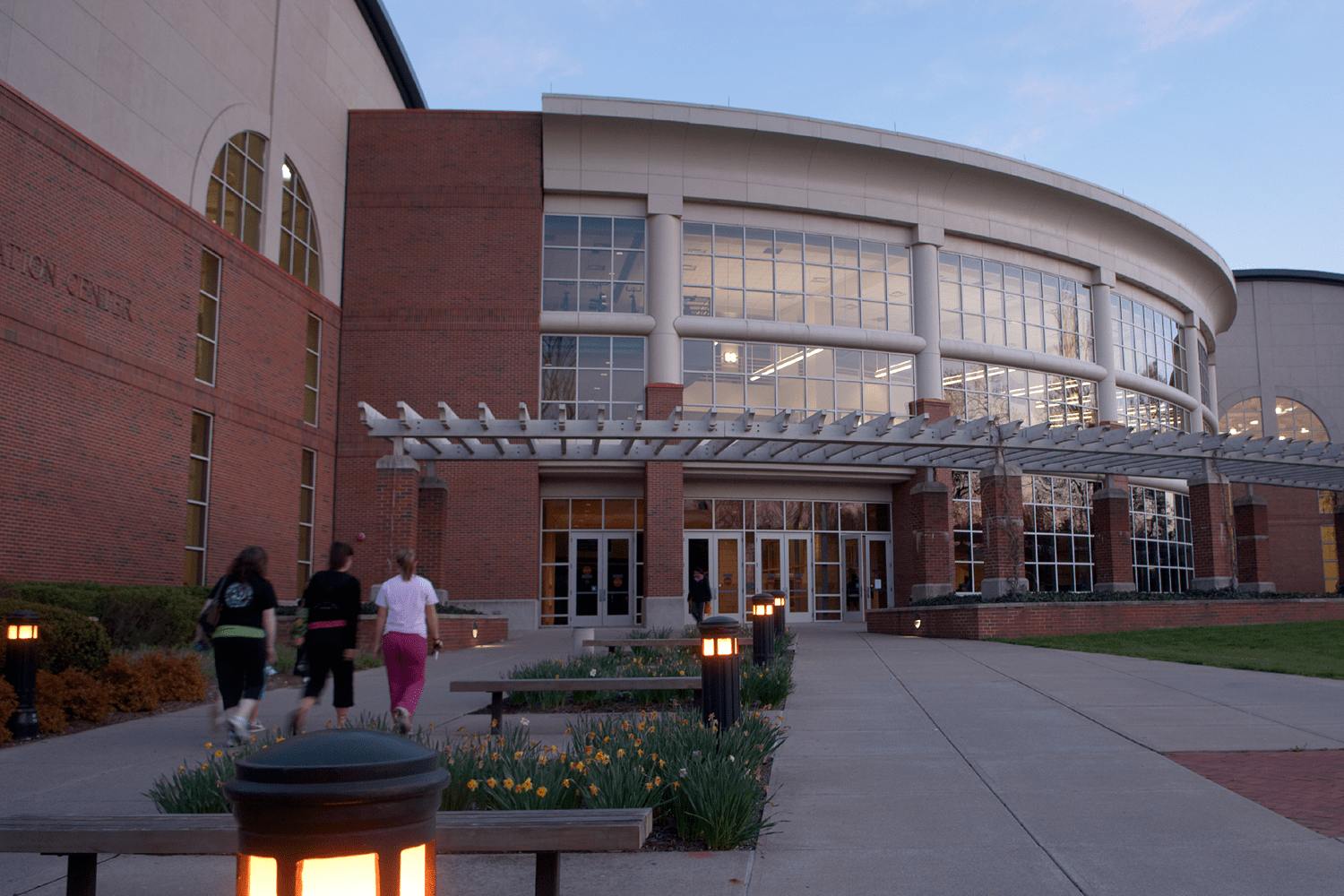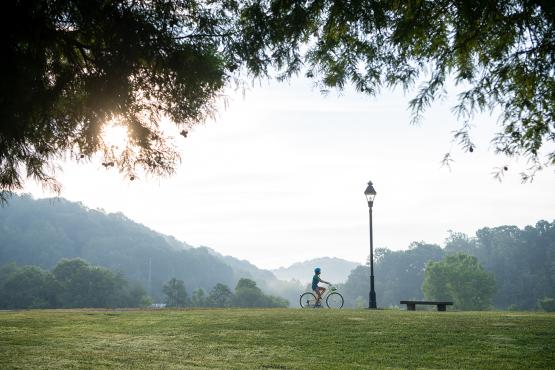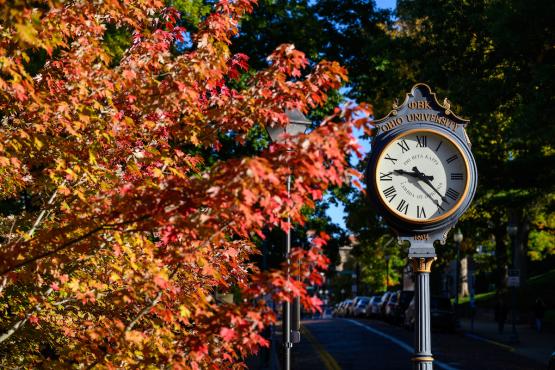
The Ping Center opened in January 1996, ushering in a new beginning for student recreation and wellness that was developed and supported—both in spirit and financially—by Ohio University students.
In 1992, OHIO’s Student Senate not only endorsed the development of a student recreation facility on the Athens Campus, it voted unanimously to support a $65 per quarter student fee to fund the construction. That decision from OHIO’s student leaders was based on a three-year, student-led study of recreation needs that found deficiencies in the campus’ indoor recreational spaces.
At the time, the University’s student recreation and wellness programs operated independently of each other and were housed in Grover Center, which served as OHIO’s basketball arena until the Convocation Center debuted in 1968.
“Grover had a basketball arena with five courts that would transition to volleyball courts when needed,” remembers Dick Woolison, BSED ’62, MED ’63, EMERT ’99, who served as the Ping Center’s first director. “Athletics would practice there, and occasionally, when weather wasn’t good, the baseball and football teams would come inside for practice. The space would then turn into a place for intramural games after practices were over. Some nights there would be 25 to 30 different games in one night, so the courts were typically always taken up and didn’t give much time for other students to come in and play.”
With the need for a new recreation center clearly defined, Dr. Charles J. Ping, Ohio University's 18th President, turned to the student body again, surveying them to determine what they wanted in this new campus amenity.
“I remember doing many unique things to make sure the Ping Center was going to be revolutionary for OHIO students and that they would get a say in what their campus recreation looked like,” says Dr. Douglas Franklin, PHD ’07, EMERT ’14.
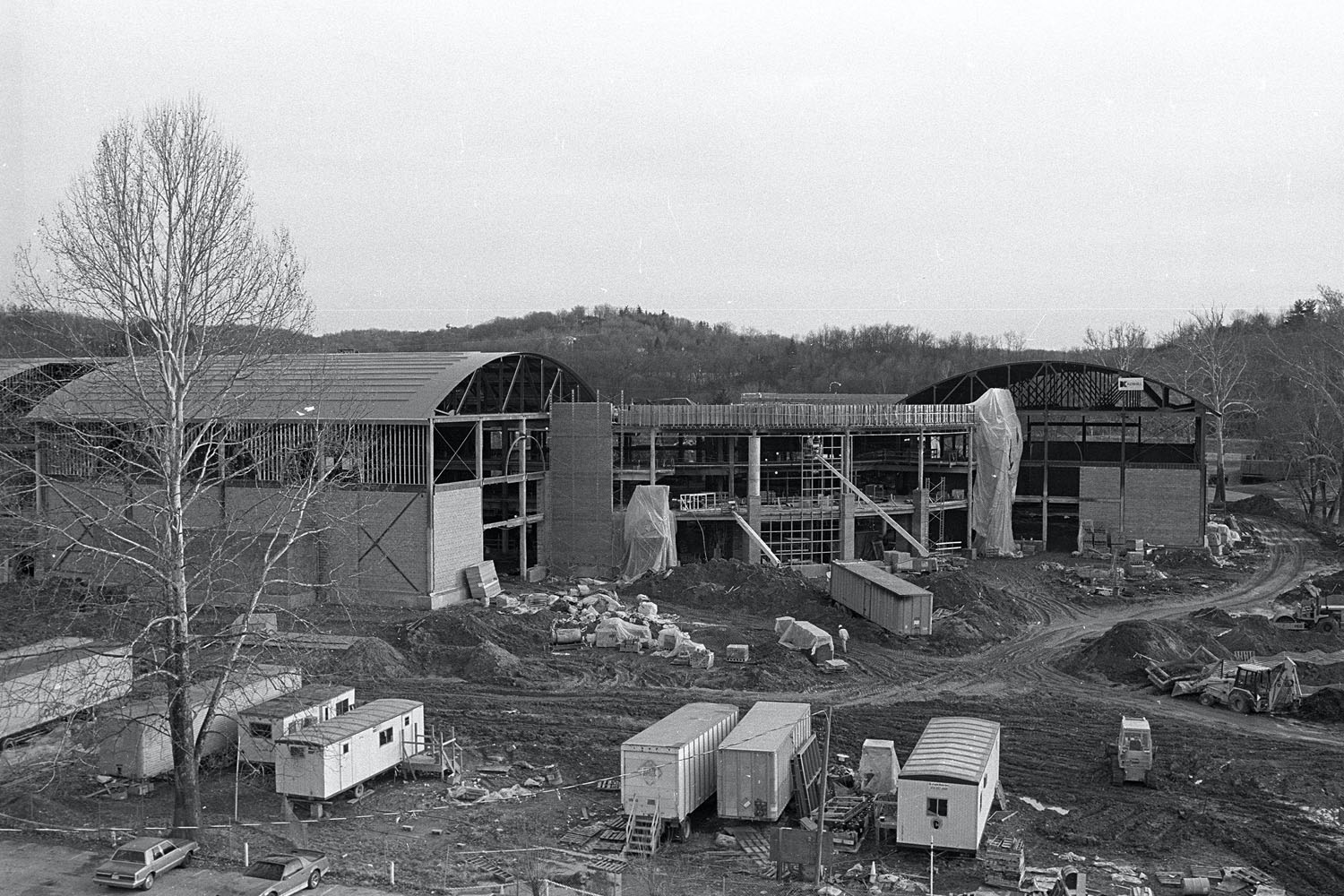
The Ping Center is under construction in this 1995 photo taken from atop Clippinger Laboratories. Photo courtesy of the Mahn Center for Archives & Special Collections
Franklin, who served as the assistant dean of recreation and wellness in what was then the College of Health and Human Services and oversaw Campus Recreation at the time the Ping Center opened, recalled taking a student recreation advising club to the Arnold Classic in Columbus. There they could explore different weight and cardio equipment and envision what could be at the Ping Center.
“For President Ping, having students involved in the development of this building was his mission. Their input was so important to him,” says Woolison. “Although Dr. Ping’s presidency was over by the time we really got into construction and the space debuted, he played a very crucial role in getting students’ voices involved.”
After 19 years of service as OHIO’s 18th president, Ping retired in June 1994. Nine months before that, OHIO’s Student Senate went to the Ohio University Board of Trustees with one more request for the new student recreation center: that it be named in honor of President Ping, crediting him for taking “the necessary actions to ensure a quality center with input from all parties, thus bringing it into reality.”
Students returning from winter break in 1996 were the first Bobcats to experience the Ping Center whose unveiling was ensured by Woolison, who braved some near-blizzard weather and even slept in his office to make sure its opening wasn’t delayed. When the building debuted, it was one of the largest campus recreational facilities in the country—and one of the first to house a double-sided climbing wall, thanks, according to Franklin, to input from students.
At 168,000 square feet and spanning three floors, the center offered everything from five basketball/volleyball courts and two multipurpose gymnasiums to an elevated four-lane indoor running track, weight areas and group fitness rooms. It brought OHIO’s recreation and wellness programs together for the first time and paved the way for advancing both programs and creating new avenues for student experiences.
“Building this campus recreation program was more than just a place to exercise and play sports,” says Franklin. “It was a place and program that would advance health and wellness, build relationships, implement experiential learning and fit into a modern collegiate program.”

Ping Center 2006. Photos by Rick Fatica, MA '08
Creating a welcoming place where students could interact on campus and build relationships outside of the classroom was and continues to be a goal of the Ping Center.
“I think Ping really helps build comradery among students,” says Erin (Matson) James, BBA ’07, who visited the center with her roommate on their second day as Ohio University students—and every day thereafter. “It really is a place that allows you to meet new people and try different things outside of your comfort zone, and I think that’s a really important part of the college experience.”
For James, the Ping Center was a second home on campus—a part of her daily routine, whether her trips there were to workout, for a class and for a game amongst friends.
“I actually met my husband at Ping,” says James, remembering the call for students interested in playing on an intramural floor hockey team that brought her and fellow Bobcat David James, BSED ’07, together. “We still stay in touch with many of the people we played with at Ping. For me, it was really a highlight of my college career.”
To the students and staff who developed and have sustained it, the Ping Center is part recreation center, wellness center, community center and employment center—and all devoted to nurturing healthy bodies, minds and community.
“Ping is truly a place for experiential learning and student development,” says Mark Ferguson, associate dean of students for well-being and executive director of University Well-being and Recreation. “Whether that’s because of our programming, the academic courses offered or the opportunities to work in the facility, student learning remains a central focus.”
OHIO’s Department of Campus Recreation employs nearly 600 students, with approximately 125 students working at the Ping Center.
“Students run the building and practically everything that goes along with it, with guidance from our professional staff,” explains Ferguson. “By doing this, they get first-hand experience and knowledge that are valuable for their careers and a place where they can grow and learn.”
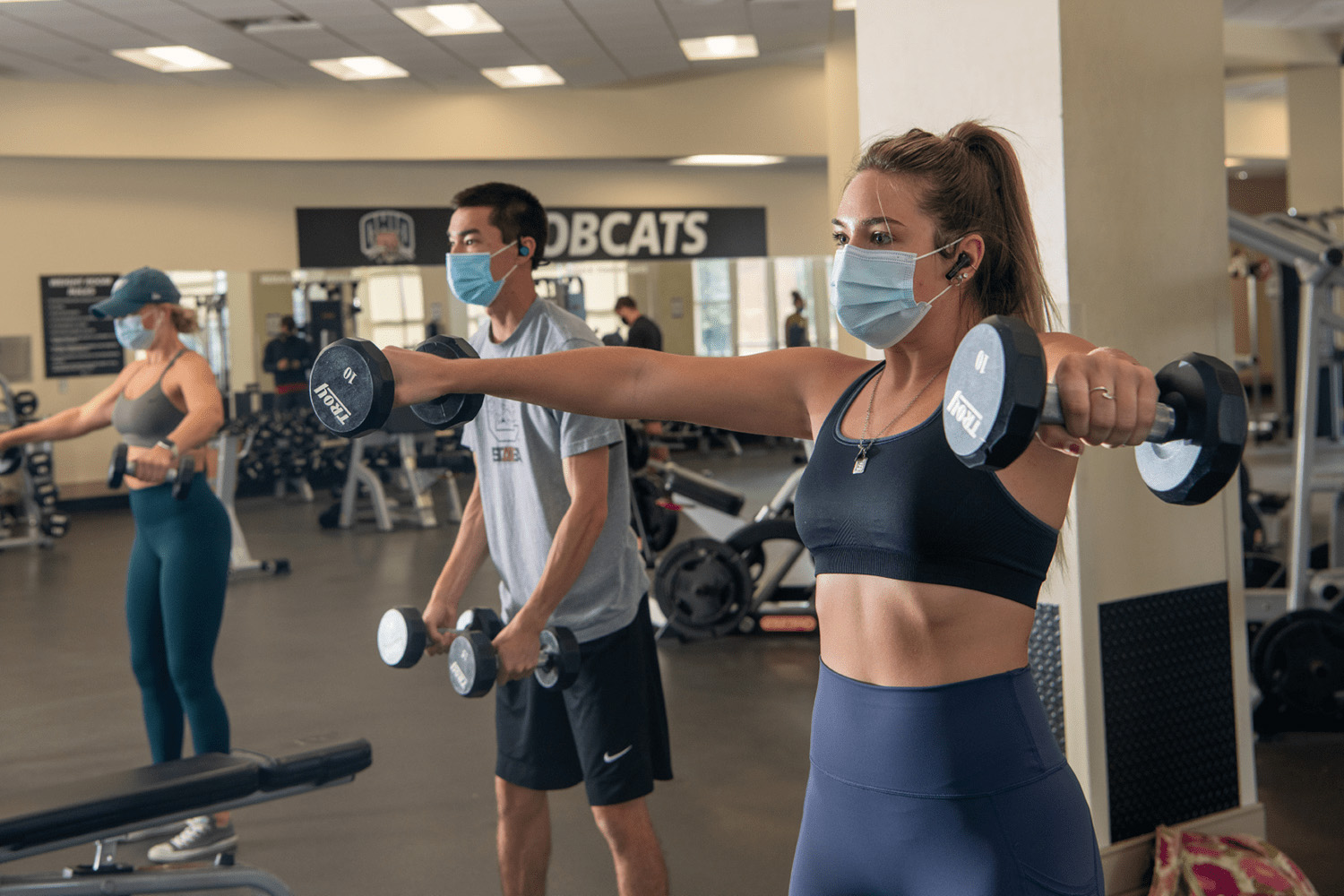
Students exercise under COVID-19 safety protocols at the Ping Center. Photo by Ben Wirtz Siegel, BSVC '02
Since joining Campus Recreation in 2013, Ferguson has made student growth and learning a priority at the Ping Center, partnering with the Patton College of Education, for example, to provide space for recreational studies and coaching education classes. In response to COVID-19 restrictions, the Ping Center’s upstairs studios hosted some School of Dance courses.
Staff and student employees remain mindful of the needs that brought the Ping Center into existence in the first place, continuing to adapt with the times, implementing new health and wellness features that serve a diverse student population and keeping the facility up to par with student expectations.
“There’s always more work to do, but we’re really trying to be more inclusive in our spaces and more mindful of our student population and who feels welcome and who doesn’t,” Ferguson notes. “We’re trying to challenge ourselves to find new ways to get people into Ping and for them to feel comfortable and welcomed.”
Recent years at the Ping Center have seen the renovation of a weight room, updated equipment and new flooring in some areas, and the repurposing of some racquetball courts to align with what students want, including a new cycling studio and F45 training studio.
“Throughout the years, I got to experience a lot of new things I don’t know if I ever would have tried if Ping hadn’t offered them,” says James, who now resides in North Carolina with the Bobcat spouse she met at the Ping Center. “It really helped me grow as a person—although I do regret never climbing the rock wall.”
Feature image by Rick Fatica, MA '08


